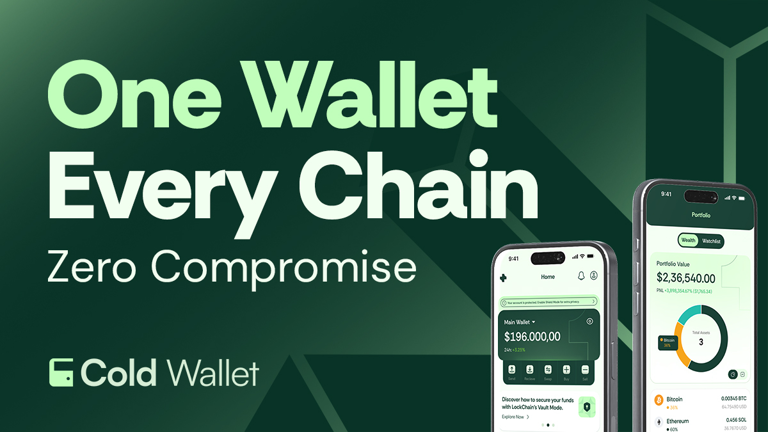In 2025, the need for cold wallets for crypto has never been greater. As digital assets become more mainstream and valuable, so does the threat landscape. Hackers are more sophisticated, phishing scams more elaborate, and centralized exchanges still prone to breaches. To mitigate these risks, savvy investors and long-term holders are increasingly turning to cold wallets the most secure way to store digital assets offline, away from internet exposure.
This article explores the fundamentals of cold wallets for crypto, highlights the advantages they bring in 2025, and provides clear guidance on how to integrate them into your digital asset security strategy.
What Are Cold Wallets for Crypto?
Cold wallets, also known as cold storage wallets, are physical or software-based wallets that keep your private keys entirely offline. This makes them immune to online attacks, malware, and phishing attempts, which typically target software wallets or crypto stored on exchanges.
There are several types of cold wallets for crypto, including:
- Hardware wallets: Physical devices that store private keys offline. These are the most popular and secure type of cold wallet.
- Paper wallets: A physical printout or handwritten note of your private and public keys. While cheap and offline, they are not recommended for beginners due to risk of damage or loss.
- Air-gapped computers: Entire systems kept disconnected from the internet, used exclusively for crypto transactions.
Each option offers a different level of usability, cost, and security but all serve the core purpose of protecting your crypto from unauthorized access.
Why Cold Wallets Are the Standard for Crypto Security in 2025
In an era where billions of dollars in digital assets are transacted daily, online wallets alone no longer provide adequate protection. Here’s why cold wallets for crypto have become the gold standard:
1. Offline Protection from Hackers
Since cold wallets are never connected to the internet, they are completely isolated from online threats. This makes it virtually impossible for hackers to remotely access your assets.
2. Full Control Over Private Keys
With cold wallets for crypto, you retain complete ownership and control over your private keys. Unlike centralized platforms that manage your keys on your behalf, cold wallets ensure that you — and only you — control your assets.
3. Reduced Risk from Exchange Failures
Crypto exchanges continue to suffer from hacks, mismanagement, and regulatory shutdowns. By storing your tokens offline in a cold wallet, you’re insulated from these risks and can securely HODL long-term without relying on third-party platforms.
4. Long-Term Storage for Serious Investors
Investors holding crypto for long-term gains prefer cold wallets because they offer peace of mind. Whether it’s Bitcoin, Ethereum, or lesser-known altcoins, placing your holdings in cold storage is like locking them in a digital vault.
How to Use a Cold Wallet for Crypto Safely
Using cold wallets for crypto properly is just as important as choosing the right one. Here’s a step-by-step guide to maximize your security:
Step 1: Purchase a Reputable Hardware Wallet
Only buy directly from official manufacturers or authorized resellers to avoid tampered devices. Always set up your cold wallet from scratch, and never trust preloaded seed phrases.
Step 2: Secure Your Recovery Phrase
When initializing the wallet, you’ll receive a 12- to 24-word recovery phrase. Write this down on paper (not digitally), and store it in a secure, fireproof, and waterproof location.
Step 3: Transfer Funds Carefully
Initiate transfers from your online wallet or exchange to your cold wallet. Double-check addresses and transaction details before confirming anything.
Step 4: Regularly Test Access
Once every few months, plug in your hardware wallet to verify access and balance. This ensures your recovery phrase works and that the wallet remains functional.
Step 5: Don’t Share or Photograph Your Keys
Never upload your recovery phrase to the cloud, take pictures, or share it digitally. Anyone with that phrase can take full control of your funds.
Features to Look for in the Best Cold Wallets for Crypto
If you’re in the market for a cold wallet, keep an eye out for the following features:
- Secure element chips: To safeguard against physical attacks.
- Open-source firmware: Ensures transparency and community-audited security.
- Multi-currency support: Ability to store multiple types of cryptocurrencies in one device.
- User-friendly interface: Especially important for non-technical users.
- Backup and restore features: Quick recovery in case of device loss or damage.
One trusted source to explore top-tier options is cold wallet, which provides reliable and well-reviewed solutions for individuals serious about securing their digital assets.
2025 Trends: The Evolving Role of Cold Wallets
As the crypto ecosystem matures in 2025, several developments are making cold wallets for crypto even more essential:
- Institutional Adoption: More businesses and funds are allocating crypto to their portfolios, necessitating robust storage solutions.
- Regulatory Pressure: With tighter compliance and reporting laws, individuals are seeking privacy-respecting ways to store their holdings.
- Multi-sig Expansion: Some cold wallets now support multi-signature authorization, offering an extra layer of protection for joint accounts or treasury functions.
These trends reinforce the importance of keeping your assets secure, private, and under your control.
Final Thoughts
Whether you’re a long-term HODLer, a high-net-worth individual, or simply cautious about your crypto security, cold wallets for crypto are an indispensable tool in 2025. They not only provide the highest level of protection against cyber threats but also empower you with full ownership of your assets.
Don’t wait until it’s too late take control of your financial future by securing your assets with a cold wallet today.





